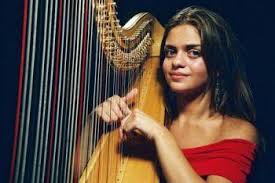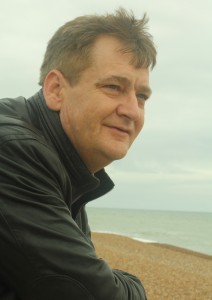Mote Hall, Maidstone,
29 November 2014
Brian Wright was quite correct in his thinking that the programme of works this evening epitomised both the planning and strengths of the orchestra. What might appear to be a conventional set of items – Suite, Concerto, Symphony – brought a number of specific challenges both for the players and the audience, and a soloist of international acclaim.
Aaron Copland’s Appalachian Spring may seem very familiar but its rhythmic complexities and solo lines are traps for the unwary. The hushed, almost sultry, opening lulls us into a false sense of ease which is gently dispelled as dawn breaks. The playing had a slight rawness to it which was in keeping with the integrity of the score. This is not a sentimental work but a vision of the openness, both physically and spiritually, of a community prior to mass industrialisation and urbanisation. Copland looks back with his eyes open even if nostalgia creeps in. Once we passed through the variations of Simple Gifts we returned to the focus of the work, the love of the newly married couple and their relationship to the world around them. In the final bars, three stars come out, like a gentle blessing on their love. A magical moment.
It should be difficult to follow this but Giovanni Guzzo’s handling of the Brahms’ violin concerto was so captivating it almost made us overlook the start. He produced a radiant sweetness of tone, across the full range of his Stradivarius, but no violin is as important as the quality of the musician playing it. The orchestra rose the challenge of his playing, producing a bite and pulse which supported the clarity of his phrasing. The second movement seemed faster than usual moving the music forward with a subtle passion and heading us into the joyful exuberance of the finale. Thankfully he gave us an encore – the slow movement from a Bach violin sonata – which proved intoxicating in its slow unfolding and gentle phrases. Please ask him to return for the Mendelssohn!
Vaughan Williams’ Fourth Symphony may have been written ten years before the Copland but it has all the shock of the new. The terror explodes from the opening bars and the intensity of the writing never lets up. The slow movement may be quieter but it never smiles, and even when the Scherzo arrives, the outward sign is more a grimace than a greeting. The marches of the final movement prefigure Shostakovich and have all of his doubled-edged attack. Is there any hope here? Not a lot. Is this a vision of the future or a man distracted by the building of the Dorking by-pass? In the end neither matter for the symphony, played with remarkably tight control of its rhythms and some fine solo playing, is a massive outpouring of pain in a world which seems to be running out of control.
Next time – Weber, Taffanel, Nielsen and Dvorak – Saturday 31 January 2015.








